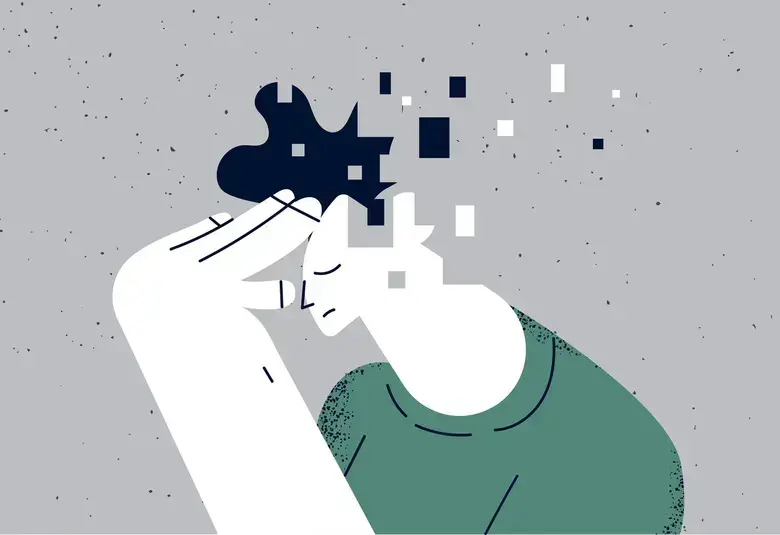Interest in psychosocial research in people living with dementia and their caregivers is growing. Tailored, person-centered therapies have shown considerable benefits across many aspects of dementia management, from cognition and behavior, to long-term care. Delegates at the AAIC heard how psychological, social, and environmental interventions are changing lives for the better
치매 환자와 간병인에 대한 심리사회학적 연구가 점점 주목을 받고 있습니다. 개인 맞춤형 인간 중심 치료법들은 인지기능과 행동 증상 치료에서부터 장기 치료에 이르기까지 치매 관리의 많은 측면에서 상당한 이점을 보여왔습니다. 알츠하이머협회 국제 컨퍼런스(AAIC)의 참석자들은 심리적, 사회적, 환경적 개입이 어떻게 삶을 더 나은 방향으로 바꿀 수 있을지에 대해서 들었습니다.
For people living with dementia, psychosocial or “non-pharmacological” therapies have been developed with the goal of preventing or relieving behavioral and psychological symptoms, and improving relationships and wellbeing.1, 2
치매 환자들의 행동적, 정신과적 증상을 예방 또는 완화하고, 그들의 대인관계와 삶의 질을 개선하기 위해 정신사회적(또는 ‘비약물’) 치료법들이 개발되어왔습니다.1, 2
Psychosocial interventions are not disease-modifying, Professor Henry Brodaty (UNSW Sydney and Centre for Healthy Brain Ageing, Australia) explained to delegates at the AAIC in Chicago, but provide a person-centered approach to dementia care.
UNSW 시드니의 ‘Healthy Brain Ageing’ 센터 소속 헨리 브로대티(Henry Brodaty) 교수는 시카고에서 열린 알츠하이머협회 국제 컨퍼런스(AAIC, Alzheimer's Association International Conference)에서 심리사회적 개입은 질환의 근본적인 치료가 아니라, 치매 케어에 대한 인간 중심적 접근법을 제공하는 것이라고 설명하였습니다.
Person-centered therapy is effective in dementia
A range of cognitive and behavioral interventions have been studied in people living with dementia. A recent systematic review concluded that moderate-high intensity, multi-component exercise improved physical and cognitive function.3 Small benefits on cognition, have also been shown alongside improvements in communication and quality of life with reminiscence therapy, which uses memory aids to encourage discussion of past activities, events and experiences.4
인간 중심 치료는 치매에 효과적
치매 환자들에 대한 다양한 인지적, 행동적 개입이 연구되어왔습니다. 최근 실시된 한 체계적 문헌고찰에서는 다양한 요소로 이루어진 중·고강도 운동이 신체 및 인지기능을 향상시킨다고 결론 내렸습니다.3 과거 활동, 사건 및 경험을 주제로 대화를 촉진하는 각종 기억보조도구(memory aid)를 사용하는 회상 치료(reminiscence therapy)는 소통 및 삶의 질의 개선과 함께 인지 능력에서도 약간의 효과를 보였습니다.4
Cognitive stimulation uses a range of engaging activities to enhance cognitive and social functioning, and studies have demonstrated benefits on cognition, communication, social interaction and quality of life.5-7
인지 자극은 인지적, 사회적 기능을 강화하기 위한 다양한 참여 활동을 이용하는데, 이와 관련된 여러 연구에서 인지기능, 의사소통, 사회적 상호작용, 삶의 질 측면에서 이점을 보였습니다.5-7
Cognitive rehabilitation aims to improve the areas daily functioning considered most important by the person living with dementia and their caregivers
인지 재활은 치매 환자와 간병인들이 가장 중요하게 여기는 일상생활 기능 영역의 개선을 목표로 합니다.
Cognitive rehabilitation aims to improve the areas daily functioning considered most important by the person living with dementia and their caregivers.8, 9 This approach appears to reduce caregiver burden and functional disability, and may even delay the need for admission to an institution.8, 10 Beneficial effects on cognition were also seen using computer-based cognitive rehabilitation.11
인지 재활은 치매 환자와 간병인들이 가장 중요하게 여기는 일상생활 기능 영역의 개선을 목표로 합니다.8, 9 이러한 접근은 간병인의 부담과 환자의 기능 장애를 완화하며, 더 나아가 요양시설 입소를 지연시킬 수도 있습니다.8, 10 또한 컴퓨터 기반 인지 재활도 인지기능에 대한 긍정적인 효과를 보였습니다.11
Studies of sensory and psychological interventions (e.g. light therapy, animal-assisted therapy, and music therapy) for behavioral and psychological symptoms, have shown varying degrees of effectiveness. Interventions that improved communication between care home staff and persons living with dementia allowing the individual’s wishes to be understood and acted upon (person-centered care, communication skills training, or adapted dementia care mapping), decreased agitation immediately and in the longer term (up to 6 months).12
행동적, 정신과적 증상에 대한 감각적·심리적 개입 연구(예: 빛 치료, 동물 보조 치료, 음악 치료)들에서는 효과의 정도가 다양하게 나타났습니다. 요양원 직원들과 치매 환자 사이의 의사 소통을 개선하여 환자 개개인이 원하는 바를 직원들이 이해하고 조치할 수 있도록 하는 개입(인간 중심 케어, 의사소통 훈련, 적응형 치매 케어 매핑)은 즉시, 그리고 장기적으로(최대 6개월) 환자의 불안을 감소시켰습니다.12
Successful interventions benefit caregivers and people living with dementia
It is well known that caregivers experience considerable negative effects from dementia, with behavioral symptoms having a particular impact. Multi-component interventions, including those from the Resources for Enhancing Alzheimer’s Caregiver Health (REACH) project and STrAtegies for RelaTives (START), a manual-based coping strategy, have been shown to reduce caregiver depression.13, 14
성공적인 개입은 간병인과 치매 환자들에게 유익
간병인이 치매로 인해 상당 수준의 부정적인 영향을 받으며, 특히 행동 증상들에 많은 영향을 받는다는 것은 잘 알려진 사실입니다. ‘알츠하이머병 간병인 건강 증진을 위한 리소스’(REACH, Resources for Enhancing Alzheimer’s Caregiver Health) 프로젝트와 ‘가족들을 위한 전략’(START, STrAtegies for RelaTives) 등으로부터 나온 다요소 개입(multi-component intervention)이 간병인의 우울증을 완화시키는 것으로 나타났습니다.13, 14
In the past, caregiver interventions did not consider the potential benefits for people living with dementia but focused on the caregiver. The ‘Going to Stay at Home’ study combined residential respite care with an educational program over 5 days for 90 persons with dementia and their primary family caregiver.15 Over the next 12-months, despite deteriorating function among persons living with dementia, caregiver depression and burden remained unchanged. In parallel, both caregiver unmet needs and behavioral symptoms among persons living with dementia were reduced. Persons with dementia from the ‘Going to Stay at Home’ study were significantly less likely to be permanently admitted to a residential care home compared with those who had received routine residential respite care
과거의 간병인 개입 방식들은 치매 환자에게 줄 수 있는 잠재적 유익을 고려하지 않고 간병인에게만 초점을 맞추었습니다. ‘집에서 돌보기’(Going to Stay at Home) 연구에서는 입주형 간병 교대 서비스에 교육 프로그램을 연계시켜서 90명의 치매 환자들과 이들의 주 간병인이 5일간 이 프로그램에 참여하게 했습니다.15 이후 12개월 간 치매 환자들의 기능 악화에도 불구하고 간병인의 우울증과 부담은 늘지 않았습니다. 이와 동시에, 지금껏 충족되지 못했던 간병인의 니즈와 치매 환자의 행동 증상이 모두 감소되었습니다. ‘집에서 돌보기’ 연구에 참여한 치매 환자들은 입주형 간병 교대 서비스를 통한 간병만을 정기적으로 받은 치매 환자들보다 영구적으로 요양 시설에 입소하는 경우가 더 적었습니다.
With benefits of tailored, home-based caregiver interventions being seen for both persons living with dementia and their caregivers, a number of studies are currently underway in low and middle-income countries (https://www.alz.co.uk/1066/).
가정 기반의 맞춤형 간병인 개입이 치매 환자와 간병인 모두에게 긍정적인 효과를 보임에 따라, 현재 중·저소득 국가에서 이에 대한 많은 연구가 진행되고 있습니다(https://www.alz.co.uk/1066/).
Tailoring interventions and environments for long-term care
Long-term care remains one of the biggest issues in dementia care, with some countries spending up to 4.3% of gross domestic product on this in 2014.16 For those people entering nursing homes however, it is the impact on their quality of life that is possibly of greatest concern
장기적인 케어를 위한 개입 및 환경 조성
장기적인 케어는 치매 케어와 관련된 가장 큰 문제 중 하나이며, 몇몇 국가는 여기에 GDP의 4.3%까지 투입하고 있는 실정입니다(2014년 기준).16 하지만 요양 시설 입소자들의 경우 무엇보다도 삶의 질이 가장 큰 문제일 것입니다.
Interventions or environments that encourage communication and provide opportunities for social interactions between residents or with caregivers may be of considerable value
입소자들 사이 또는 간병인들과의 사회적 상호 작용을 위해 소통을 장려하고 기회를 제공하는 개입과 환경은 상당한 가치가 있을 수 있습니다.
Many people living with dementia find nursing homes to be lonely places, often lacking in meaningful friendships and supportive social relationships.17 In this respect, interventions or environments that encourage communication and provide opportunities for social interactions between residents or with caregivers may be of considerable value.
많은 치매 환자들이 요양원이 외로운 곳이라고 생각하며, 의미 있는 우정과 호의적인 사회적 관계가 부족한 곳이라고 생각합니다.17 이러한 점에서, 입소자들 사이 또는 간병인들과의 사회적 상호 작용을 위해 소통을 장려하고 기회를 제공하는 개입과 환경은 상당한 가치가 있을 수 있습니다.
The environment in which we live is important for us all, and for those living with dementia, it can have a supportive or debilitating impact. A recent set of practice recommendations for delivering patient-centered long-term care highlights the need for community, courtesy, comfort, choice, and engagement.18 Moving from traditional medical models and hospital-like institutions towards smaller, home-like settings may meet these needs, and in doing so reduce agitation and cognitive decline and improve quality of life.
우리가 사는 환경은 우리 모두에게 중요하며, 치매 환자들은 이러한 환경의 영향을 받아 병세가 개선될 수도 있고 더 악화될 수도 있습니다. 최근 발표된 환자 중심의 장기적 케어 서비스 제공을 위한 일련의 권고안은 공동체, 배려, 편안함, 선택 및 참여의 필요성을 강조합니다.18 전통적인 의료 모델과 병원형 요양 시설에서 보다 작은 규모의 가정형 환경으로의 전환은 이와 같은 니즈들을 충족해주며, 환자의 불안(agitation)과 인지 퇴행을 감소시키고 삶의 질을 향상시킵니다.
Personalized interventions remain the aim for future management models in dementia. Already dementia care is seeing a shift towards the use of goal-oriented interventions in partnership with families and care home staff, which help the person living with dementia rather than treat the symptoms. Professor Brodaty stressed the importance of continuous therapy using a combination of complementary interventions, as well as educational, technological and training support for the family caregivers and healthcare professionals involved.
개인 맞춤형 개입은 미래의 치매 관리 모델들에서도 여전히 목표로 남아있습니다. 현재 치매 케어는 가족과 요양 시설 직원들의 협력을 통한 목표지향적 개입을 활용하는 방향으로 전환되는 추세입니다. 이는 증상을 치료하기 보다는 치매를 가지고 살아가는 데 도움을 준다는 개념입니다. 브로대티 교수는 상호보완적인 개입들의 병용을 통한 지속적인 치료의 중요성과 더불어, 가족 간병인과 의료 전문가들을 위한 교육, 훈련, 첨단 기술을 지원해야 한다고 강조했습니다.
Further reading: https://progress.im/en/content/promise-person-centered-care
더 읽어보기: https://progress.im/ko/content/promise-person-centered-care
본 자료는 Global Lundbeck 의학부에서 선별한 학술대회 콘텐츠이며, 한국룬드벡의 의견과 다를 수 있습니다




